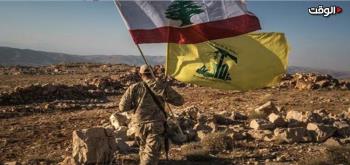Alwaght- Ahead of the expected Russian President Vladimir Putin's visit to Tehran, a law ratifying Iran's free trade zone protocol with the Eurasian Economic Union (EAEU) was signed. The Russian leader said the agreement will considerably increase the trade between Iran and the economic bloc. The foundation agreement was signed in 2014 by Belarus, Kazakhstan, and Russia and went into effect in January 2015.
A free trade zone with the bloc was proposed by Iran and finally signed in 2018. By signing the agreement, Iran practically joined the union. Russian officials say that Iran is a reliable partner in the global changes towards building a multipolar world and pushing against the collective Western resistance to this trend. The free trade zone with EAEU is significant in terms of Tehran's strategy for gaining economic opportunities and boosting regional cooperation especially with Moscow in the face of the Western sanctions.
The economic opportunities in Eurasia are important because Iran in the past years fell behind rivals in EAEU market. That is while Iran and Eurasia can meet each other's needs with lowest costs.
The Eurasian Economic Union has many advantages that can upgrade Iran's economic position regionally and globally. The member countries have a population of more than 180 million, an area of more than 20 million square kilometers, and GDP of more than $4 trillion. Access to such a large market, beside leading to the consolidation of bilateral economic and trade relations, can also create new job opportunities inside Iran and produces huge benefits.
According to data, the volume of trade between the Eurasian Union and world countries is about $850 billion. Of this amount, $331 billion is imports. Iran's share of the EAEU trade is about $2.5 billion, of which $1.6 billion are imports and $823 million are exports. At least 80 percent of Eurasia's exports to Iran are agricultural products, especially grains, and 68 percent of Iran's exports to it are agricultural products, too, especially fruits and nuts.
Therefore, with the signing of this agreement, Iran's share of the Eurasian market will be much wider in the future than before, and considering Iran's transit and trade infrastructures, cooperation with this large economic bloc can turn Iran into a regional hub and boost its North-south Corridor at a time the West strives to isolate Tehran.
De-dollarization in domestic trade of the union and introduction of a common currency are on the agenda of the bloc. If such a plan is concluded, it will pay dividends to all members, especially Iran that cannot trade with the US dollar because of the Western sanctions. Moreover, expansion of trade with Eurasian states, which will bolster non-oil trade, can relatively rid Iranian economy of its single-product status and reliance on oil and also provide it with a chance of diversification.
Iran's significance for EAEU
Iran, reciprocally, has many attractions for the regional countries that help advance trade exchanges. After eruption of Ukraine crisis and Western sanctions against Russia, Iran's significance for Eurasian states grew remarkablely and their leaders visited Iran hoping to boost trade with the Islamic Republic in all areas.
The Central Asian countries, predominantly landlocked, are looking for ways to get out of this geopolitical situation so that they can access the high seas and promote their trade with other parts of the world. Located in the best transit position between the Caspian Sea and the Persian Gulf and linking the East to the West, Iran can be a suitable route for the transit of the goods of the EAEU member countries.
Iran officially launched North-South Corridor a month ago, two decades after its initiation. The launch motivated the Central Asian states to use it to trade with Indian Ocean and Persian Gulf states. Eurasian countries have good trade relations with India, and, using the North-South Corridor, they can transfer their export goods to India at the lowest cost and in the shortest possible time, and also make imports using this route.
From another aspect, despite the fact that Iran is under the Western sanctions, the global developments in recent months showed that the countries no longer follow the American global policies. Visits of Central Asian leaders to Tehran perfectly demonstrated this fact. These countries, which have faced many economic challenges after the Ukraine crisis, are trying to get rid of these bottlenecks to some extent by increasing economic relations with Iran. Actually, the development of economic and trade interactions between Iran and Central Asia will preserve the independence of the countries of this region and contribute to regional stability.
Kazakhstan, which has the largest economy in Central Asia due to its vast energy reserves and large territory, has recently strengthened its relations with Iran, and the level of bilateral relations is expected to increase significantly in the coming years.
With Russia keen to shore up relations with the regional states and Iran, all members can improve their economies within the framework of the free trade and even prepare the ground for larger economic union prospectively.
An energy-rich country, Iran can meet needs of such countries as Armenia and Kyrgyzstan and even play a role in transit of goods to Central Asia and Caucasus in the fastest possible time. Also, according to a recently signed agreement, Iran will transit Turkmenistan gas to Azerbaijan. This agreement can set a prelude for transit of other items using Iranian routes and railways.
Given the fact that Iran and Eurasia are the only parties that are in the vicinity of the North-South Corridor, it is predicted that growing trade exchanges among the members of the EAEU will lead to Iranian economic boost and higher geopolitical position for Tehran on a global scale.



























